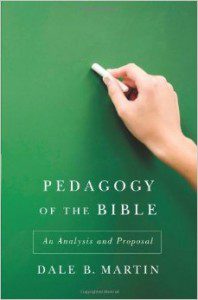Sandy Eisenberg Sasso has written a wonderful children’s book called In God’s Name that affirms the need to call God by many names: Source of Life – Creator of Light – Shepherd – Maker of Peace – My Rock – Healer – Redeemer – Ancient One – Comforter – Mother – Father – Friend.
We call God by many names because we recognize the limits of our human language and that no one name for God can capture the fullness of God. Sasso also reassures us at the end of her story that all of the individual voices ultimately merge together to call God One. The composer Brian Wren has a similarly themed hymn called “Bring Many Names.” The lyrics speak of: “Strong mother God, working night and day, planning all the wonders of creation”; “Warm father God, hugging every child, feeling all the strains of human living”; “Old, aching God…wiser than despair”; “Young, growing God, eager, on the move, crying out for justice”; and, finally, in the last verse, “Great, living God, never fully known, joyful darkness far beyond our seeing, closer yet than breathing….” So, in our worship, we bring many names for God, but, as Sasso’s story reminds us, we also call God One. In dialogue with our Jewish and Muslim sisters and brothers, we can affirm our belief in monotheism: that God is one. But, within Christianity, we have an additional belief that God is three-in-one. This idea came to be known over time as the doctrine of the Trinity, and it is traditional on the Western Christian liturgical calendar to celebrate Trinity Sunday annually on the first Sunday after Pentecost.
For this Trinity Sunday, I invite you to reflect with me on how the doctrine of the Trinity developed. The theologian Elizabeth Johnson traces the origin of Trinitarian thinking to early Christians who, she writes:
experienced the saving God in a threefold way as beyond them, with them, and within them, that is, as utterly transcendent, as present historically in the person of Jesus, and as present in the Spirit within their community. These were all encounters with only one God. Accordingly, they began to talk about God in this threefold pattern: “the grace of our Lord Jesus Christ, the love of God, and the fellowship of the Holy Spirit be with you all.” Early Christian letters and gospels are filled with this threefold cadence that appears in hymns, pithy greetings, confessions of faith, liturgical formulas, doxologies, and short rules of faith…. In the process, the monotheistic view of God flexed to incorporate Jesus and the Spirit…. Their language expanded creatively to accommodate their threefold religious experience.
I invite you to listen again to part of this quote from Johnson. The early Christians “experienced…God in a threefold way.” They still believed in one God, but they experienced this one God in at least three particular ways: “beyond them, with them, and within them.” I want to address each of these three ways in turn.
First, early Christians experienced God was beyond them, “as utterly transcendent.” They recognized that the fullness of God is beyond our language, beyond our knowledge, and beyond our experience. At the same time that early Christians experience God as beyond them, they also experienced God as with them, “as present historically in the person of Jesus.” This became known as the Incarnation: that Jesus embodied the ways of God in his life. Overtime, because his followers saw the ways of God so clearly in his life, this itinerant Jewish rabbi known as Jesus of Nazareth, became known by some as Jesus the Christ. And, at the same time that early Christians experienced God as beyond them and with them, they also experienced God as within them, “as present in the Spirit within their community.” So, although there was a transcendent aspect of God that would always be beyond their experience and even after Jesus was no longer physically with them, early Christians still experienced the immanence – the closeness – of God that is, as Wren writes, “closer yet than breathing.” They called this aspect of God “Spirit.”
And as Christians continued to experience God in these three ways, they began to talk about God in a threefold way. We see an example of this in the apostle Paul’s second letter to the church at Corinth that is one of the lectionary readings for this Sunday. This epistle was written around the mid-50s of the first century more than twenty years after Jesus’ death. And, in the very last sentence, Paul offers a three-part benediction that reflects a threefold experience of God by many early Christians: “The grace of the Lord Jesus Christ, the love of God, and the communion of the Holy Spirit be with all of you” (2 Cor 11:13).
At this point it is helpful to remember theologian Elizabeth Johnson’s warning that “The New Testament…contains no full-blown doctrine of the Trinity…nor does the word ‘Trinity’ even appear.” It was not until almost 200 years after Paul’s second letter to the Corinthians that the Christian apologist Tertullian, writing in the early 3rd century, attempted to apply the Greek word “Trinity” to Christian theology. And it was yet another century before the doctrine of the Trinity was more fully formulated at the Council of Nicaea in 325 and the Council of Constantinople in 381. In other words, it was 350 years after the crucifixion and resurrection of Jesus before Christians were able to articulate a full-fledged doctrine of the Trinity similar to that confessed by orthodox Christians today. During those three centuries, there were also many other diverse ways that Christians understood their experiences with God besides the threefold pattern that eventually became the orthodox position.
Today we are on the other side of the Trinitarian battles at least in the sense that the Revised Common Lectionary celebrates Trinity Sunday on the first Sunday after Pentecost. But today we are not limited solely to how the Trinity was understood in the 4th century. It took the early Christians 350 years to declare an official doctrine of the Trinity, and the Ecumenical Councils in which this occurred were only called in the first place because there were bitter disputes among rival Christian groups about various ways to understand God, both Trinitarian and non-Trinitarian. And although the Trinitarian camp received a majority of the votes at the 4th century Ecumenical Councils, the minority Christian groups, who lost the vote, did not disappear. And, even among the majority, there were diverse interpretations of the orthodox creeds.
Early Christians did their best to reflect theologically about their experience of God from the limits of their time and place. And we can give thanks to God for their efforts. But today our challenge is the same as it has been for people of faith in every age. We are called to reflect theologically about God as best we can based on our personal experience, taking into account the wisdom of the past. For example, many Christians today, find it insufficient to limit our language about God to the classic Trintarian formulation of “Father, Son, and Holy Spirit.”
From a feminist perspective, Sandra Schneider has joked, “God is not two men and a bird.” She’s right. Limiting ourselves to an exclusively masculine formulation (Father, Son, and Holy Spirit) is an inadequate reflection of our twenty-first century experience. Just as Sandy Sasso’s children’s book and Brian Wren’s hymn urge us to bring many names for God, we need to bring many names for the Trinity. Fortunately, there is strong precedent for this in the Christian tradition. In the 4th century, St. Augustine, bishop of Hippo, in Algeria, listed twenty different formulations for the Trinity in his book De Trinitate (“On the Trinity”).
In this same spirit, I invite you to consider three different Trinitarian formulations. Be attentive to your response to these wordings. Do they resonate with you or disturb you? Either way, gently ask yourself why this is the case. What feelings, thoughts, or memories emerge in response to these metaphors?
First, how do you respond to the traditional language of Father, Son, Spirit? This may depend in part on your relationship to your own father or son. Or it may be affected by the ways you have been a father or son. Or perhaps you have resistance to this language because you will never be a father or a son.
Second, consider the most famous example of St. Augustine’s twenty attempts at alternative Trinitarian language: “Lover, Beloved, Love.” In this rubric, God is the Lover and Jesus is the Beloved, following the proclamation from God at Jesus’ baptism that, “You are my Son, the Beloved; with you I am well pleased” (Mark 1:11 and parallels). The Spirit, in turn, is Love: the manifestation and bond of love between God the Lover and Christ the Beloved. Father, Son, Holy Spirit. Lover, Beloved, Love. Now, consider a third formulation: “Mother, Child, Womb.”
Surprisingly for some, one can root this Trinitarian language in many sources, including both the biblical book of Isaiah and the writings of the 16th century French Protestant theologian John Calvin:
Responding to objections that the title “Father” is “more appropriate” to God, John Calvin reminds us [in his Commentary on Isaiah 46:3] “that no figures of speech can describe God’s extraordinary affection towards us; for it is infinite and various.” He further explains that God “has manifested himself to be both…Father and Mother” so that we might be more aware of God’s constant presence and willingness to assist us. [Calvin continues in his Commentary on Isaiah 49:15 that] God “did not satisfy himself with proposing the example of a father, but in order to express his very strong affection, he chose to liken himself to a mother, and calls [the people of Israel] not merely ‘children,’ but the fruit of the womb, towards which there is usually a warmer affection.”
Hear also for yourself the verses from Isaiah on which we have just heard Calvin’s commentary. Listen in particular to the strong, clear female imagery for God in the Bible. In Isaiah 46:3, God says, “Listen to me, O house of Jacob, all the remnant of the house of Israel, who have been borne by me from your birth, carried from the womb.” And, even more strikingly, in Isaiah 49:15, God says about God’s relationship to the people Israel, “Can a woman forget her nursing child, or show no compassion for the child of her womb?”
To translate this verse into Trinitarian language, God is like a “Compassionate Mother”; Jesus, like all of us, is God’s “Beloved Child”; and the Spirit is the “Life-giving womb” in which all of us “live and move and have our being” (Acts 17:28). I invite you to spend some time prayerfully contemplating whichever of these Trinitarian formulations resonates with you most strongly: Father, Son, Holy Spirit. Lover, Beloved, Love. Mother, Child, Womb.
In closing, I invite you to consider one final passage, this time from Archbishop of Canterbury Rowan Williams, one of the most brilliant, gifted, and thoughtful theologians of our time. He writes:
Grace, for the Christian believer, is a transformation that depends in large part on knowing yourself to be seen in a certain way: as significant, as wanted. The whole story of creation, incarnation, and our incorporation into the fellowship of Christ’s body tell us that God desires us, as if we were God, as if we were that unconditional response to God’s giving that God’s self makes in the life of the Trinity. We are created so that we may be caught up in this; so that we may grow into the wholehearted love of God by learning that God loves us as God loves God. The life of the Christian community has as its rationale – if not invariably its practical reality – the task of teaching us this: so ordering our relations that human beings may see themselves as desired, as occasion as of joy.
Listen again to part of this quote (Williams almost always repays repeated close readings): “God desires us, as if we were God, as if we were that unconditional response to God’s giving that God’s self makes in the life of the Trinity.” Consider this claim in light of Jesus’ command to “love your neighbor as yourself” (Mark 12:28-34 and parallels). Just as “God loves us as God loves God,” each of us is called to love our neighbor as if our neighbor were our self.
The bold assertion of Trinitarian theology is that God holds us to the same standard that God holds God’s self. And the good news is that the God who holds us to this incredibly high standard also [loves] us, as if we were God, as if we were that unconditional response [between the Lover, Beloved, and Love – between the Mother, Child, and Womb] that is the inner life of God. We have come to call that dynamic, generous, interpenetrating inner life of God the Trinity.
That’s a heavy theological statement, but I invite you to spend some time considering the profound implications of it. Let me also try to phrase it another way. God loves us as if we were God; therefore, God invites us to love other humans beings in the same way that we are loved by God – that is, by loving our neighbors as our very selves. This is the deep meaning for us on this Trinity Sunday behind Jesus’ claim that the greatest commandments are to love God with our whole selves and to love our neighbors as ourselves.
In a few moments we will listen to an anthem inspired by a famous prayer that is traditionally attributed to St. Patrick, the fifth century patron saint of Ireland. It begins, “I bind unto myself today the strong Name of the Trinity, by invocation of the same the Three in One and One in Three.” I invite you to listen prayerfully to the lyrics, and consider how it might feel for you to pray some version of St. Patrick’s words today on this Trinity Sunday: “to bind unto yourself the strong Name of the Trinity?” Which strong Name of the Trinity would you choose? Father, Son, Spirit; Lover, Beloved, Love; Mother, Child, Womb; or perhaps another formulation of your own choosing.
As you listen, I invite you to open your heart to God. In contemplating what it might feel like to bind yourself to the strong Name of the Trinity, may you experience some of what it means that God loves us as if we were God.
St Patrick Breastplate: An Excerpt
I bind unto myself today
The strong Name of the Trinity,
by invocation of the same
The Three in One and One in Three.
Christ be with me, Christ within me,
Christ behind me, Christ before me,
Christ beside me, Christ to win me,
Christ to comfort and restore me.
Christ beneath me, Christ above me,
Christ in quiet, Christ in danger,
Christ in hearts of all that love me,
Christ in mouth of friend and stranger.
I bind unto myself the Name,
The strong Name of the Trinity,
By invocation of the same,
The Three in One and One in Three.
Spiritual Exercise #1:
Read the following quote from Archbishop of Canterbury Rowan Williams three times, slowly and prayerfully:
Grace, for the Christian believer, is a transformation that depends in large part on knowing yourself to be seen in a certain way: as significant, as wanted. The whole story of creation, incarnation, and our incorporation into the fellowship of Christ’s body tell us that God desires us, as if we were God, as if we were that unconditional response to God’s giving that God’s self makes in the life of the Trinity. We are created so that we may be caught up in this; so that we may grow into the wholehearted love of God by learning that God loves us as God loves God. The life of the Christian community has as its rationale – if not invariably its practical reality – the task of teaching us this: so ordering our relations that human beings may see themselves as desired, as occasion as of joy.
Pay attention to the thoughts and feelings this passage evokes in you. What images or memories come to mind? Spend some time journaling or drawing in response.
Spiritual Exercise #2:
Spend some time contemplating the above passage from Williams in light of Jesus’ command to “love your neighbor as yourself”:
God loves us as if we were God; therefore, God invites us to love other humans beings in the same way that we are loved by God – that is, by loving our neighbors as our very selves.
Be open to how God may be calling you in response to this idea.
Spiritual Exercise #3:
How would it feel for you to pray some version of St. Patrick’s words: “to bind unto yourself the strong Name of the Trinity?”
Which strong Name of the Trinity would you choose and why?
Father, Son, Spirit;
Lover, Beloved, Love;
Mother, Child, Womb;
or perhaps another of your own choosing.
In contemplating what it might feel like to bind yourself to the strong Name of the Trinity, open your heart to experiencing some of what it means that God loves us as if we were God.
Do you feel a pull of God’s call on your heart to love others in the same way that we are loved by God, by loving your neighbor as yourself?
For Further Reading
Note: The below book descriptions are excerpted from published reviews of these works.
To learn about other children’s books by Sandy Eisenberg Sasso
speakingoffaith.publicradio.org/programs/spiritualityofparenting/
Rowan Williams, “The Body’s Grace”: This address is published in Our Selves, Our Souls and Bodies, edited by Charles Hefling. It is also available online at http://www.igreens.org.uk/bodys_grace.htm
Rowan Williams, Arius: Heresy and Tradition: Arius is widely considered to be Rowan Williams’ magnum opus. Arianism has been called the “archetypal Christian heresy” because it denies the divinity of Christ. In his masterly examination of Arianism, Rowan Williams argues that Arius himself was actually a dedicated theological conservative whose concern was to defend the free and personal character of the Christian God. His “heresy” grew out of an attempt to unite traditional biblical language with radical philosophical ideas and techniques and was, from the start, involved with issues of authority in the church. Thus, the crisis of the early fourth century was not only about the doctrine of God but also about the relations between emperors, bishops, and “charismatic” teachers in the church’s decision-making. In the course of his discussion, Williams raises the vital wider questions of how heresy is defined and how certain kinds of traditionalism transform themselves into heresy. This book provides fascinating reading for anyone interested in church history and the development of Christian doctrine.
Catherine M. Lacugna, God for Us: The Trinity and Christian Life: A brilliant theologian revitalizes theology and Christian life by recovering the early Christian roots of God as Trinity. She shows how understanding God as a community of persons is vital to the living of Christian faith.
Bart Ehrman, Lost Christianities: The Battle for Scripture and the Faiths We Never Knew: Ehrman, a professor of religion at UNC Chapel Hill, rehearses the now-familiar story of the tremendous diversity of early Christianity and its eventual suppression by a powerful “proto-orthodox” faction. The proto-orthodox Christians won out over many other groups, and bequeathed to us the four Gospels, a church hierarchy, a set of practices and beliefs, and doctrines such as the Trinity. Ehrman eloquently characterizes some of the movements and Scriptures that were lost as he outlines the many strands of Christianity that competed for attention in the second and third centuries. He issues an important reminder that there was no such thing as a monolithic Christian orthodoxy before the fourth century.
Notes
1 Sandy Eisenberg Sasso, In God’s Name (Woodstock, Vermont: Jewish Lights Publishing, 2002).
2 Brian Wren, “Bring Many Names” in The New Century Hymnal, 11 (my emphasis).
3 In Miroslav Volf new book Allah: A Christian Response, he does some excellent work on the writings of Nicholas of Cusa. A century before Martin Luther, Nicholas wrote (as a Christian who affirmed the Trinity!) that, “In the manner in which Arabs and Jews deny the Trinity, assuredly it ought to be denied by all.” In other words, Jewish-Christian-Muslim ‘tri-alogue’ is old-school! Or as Volf summarizes, “Everything Muslims reject in regard to God as the Holy Trinity, Christians reject as well…. Everything Christians affirm about the Trinity, Muslims ought to affirm as well.”
4 Elizabeth A. Johnson, Quest for the Living God: Mapping Frontiers in the Theology of God (New York: Continuum, 2008), 204-205.
5 Johnson, 205.
6 Tertullian, Against Praxeas, chapters 2-3, available online at http://www.ccel.org/ccel/schaff/anf03.v.ix.ii.html.
7 Johnson, 205-206.
8 To read the text of numerous ancient Christian creeds, visit: http://www.creeds.net/ancient/.
9 Bart D. Ehrman, Lost Christianities: The Battles for Scripture and the Faiths We Never Knew (Oxford University Press, 2005).
10 Schneider is quoted in Johnson, 208.
11 Augustine’s twenty formulations for Trinity. Quoted in David S. Cunningham, These Three Are One: The Practice of Trinitarian Theology (Challenges in Contemporary Theology) (Oxford: Blackwell Publishers, 1998), 93.
12 “Mother, Child, Womb.” For a discussion of these and other Trinitarian options see “The Trinity: God’s Love Overflowing” available online at one time at:
www.pcusa.org/theologyandworship/issues/trinityfinal.pdf.
13 Ibid. The three bolded words my emphasis, illustrating how Calvin’s writings can be used to buttress the Trinitarian formulation “Mother, Child, Womb.”
14 As above, the three bolded words are my emphasis, illustrating how God’s words, spoken through the prophet Isaiah, directly support the Trinitarian formulation “Mother, Child, Womb.”
15 Rowan Williams, The Body’s Grace: The 10th Michael Harding Memorial Address, now reprinted in Charles Hefling, ed., Our Selves, Our Souls and Bodies (Boston: Cowley Press, 1996), 56-68; here, 59. Quoted in Cunningham, 299. This address is available online at http://www.igreens.org.uk/bodys_grace.htm.
16 If I were to expand this sermon to include another section (or sections), I would want to explore at least three additional theological ideas: (1) theosis – a concept frequently found in Eastern Orthodox Christianity that is also known as divinization) and refers to salvation by participation in the life of God; (2) perichoresis – a term also frequently found in Eastern Orthodox Christianity that refers to the mutual inter-penetration and indwelling of the Trinity; (3) panentheism – a view that God is both beyond, with, and within all of Creation. The inclusion of God being beyond distinguishes this view from pantheism.

















